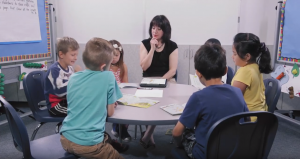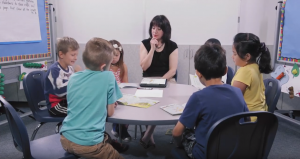 Many current iterations of Guided Reading, especially those with strong Reading Recovery® influences, heavily emphasize skill work. This skilled work often occurs at the beginning of a Guided Reading lesson to scaffold readers as they cope with any decoding challenges that might occur.
Many current iterations of Guided Reading, especially those with strong Reading Recovery® influences, heavily emphasize skill work. This skilled work often occurs at the beginning of a Guided Reading lesson to scaffold readers as they cope with any decoding challenges that might occur.
Guided Reading is an opportunity for students to integrate known strategies to make meaning of a text. This is a time when students are “with the support of the teacher, reading, thinking, and talking their way purposefully through a text” (Reading in Junior Classes, 1994). Scaffolding possible challenges before the reading begins, while well-intentioned and even data-driven, neglects the learner’s need for experiences to self-regulate the application of skills and strategies in a supportive context.
What Are the Components of Guided Reading?
Guided Reading, as we at Okapi see it, emphasizes co-constructing meaning through supportive conversations about the text, using text ideas, text language, text organization, and text layout, to enable readers to make sense of the text. Necessary skill work is embedded within the reading experience; strategy use is emphasized during and after reading the text. Additional "returning to the book" experiences are guided by careful teacher observation and are responsive in nature.
Our assessment tools are designed to guide teachers in this responsive, decision-making process. We encourage teachers during our professional development to understand the role of returning to a text is to strengthen a student's developing reading process and that additional work is guided by careful observation of what students need for their learning.
Suggestions for returning to the book may include additional skill work, as well as ideas for developing fluency, writing, and sharing and presenting. In addition, we encourage teachers to use our paired texts in a synthesis lesson, supporting readers to talk about the big ideas which link the pair. Debra Crouch.

